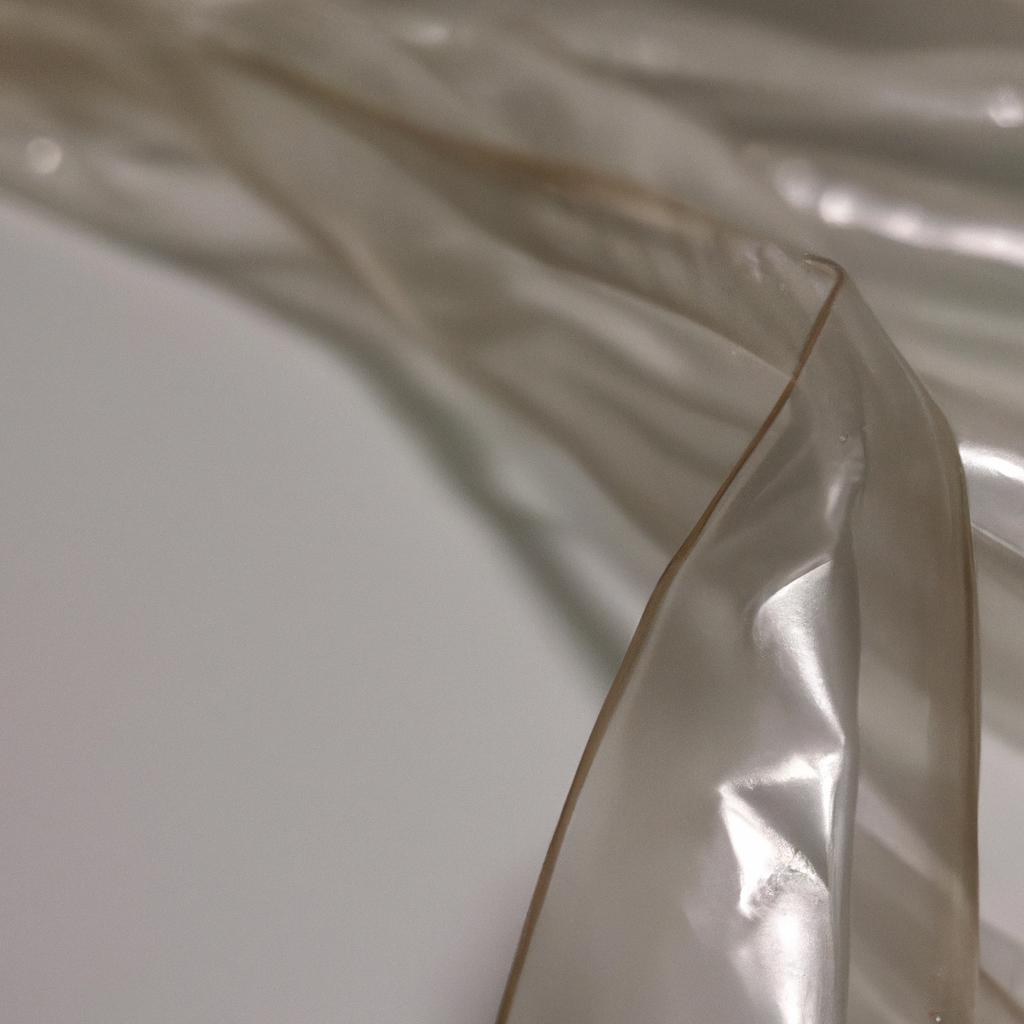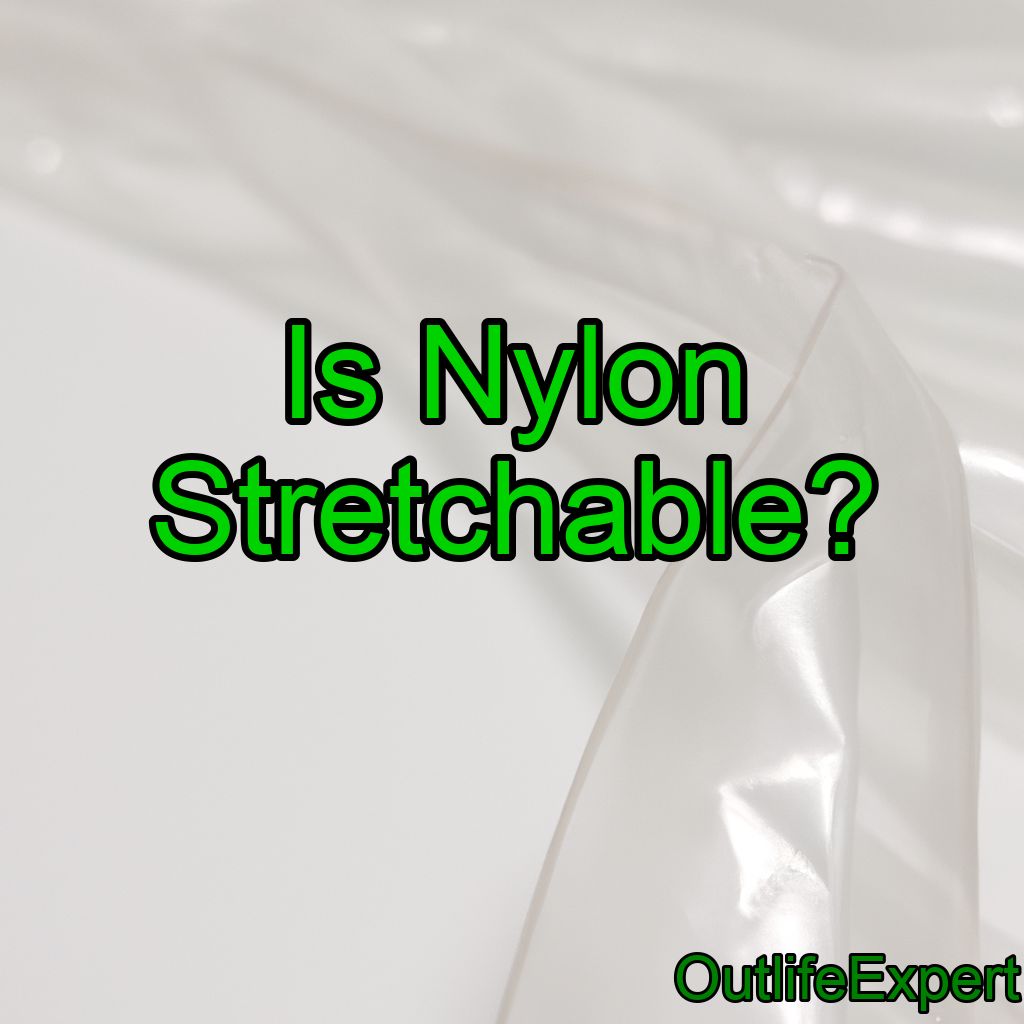Nylon is a popular fabric choice for outdoor apparel, and it’s often the material of choice when you need something that can stretch with your body.
Yes, nylon is stretchable. It is a synthetic polymer known for its elasticity, strength, and durability. To enhance its stretchability, it is often blended with other materials like spandex or elastane. However, the degree of stretch depends on the specific type of nylon and the fabric construction.
But just how far does nylon stretch?
As an outdoor expert, I’m here to answer all your questions about whether or not this versatile material can handle being pushed beyond its limits.
When we think of fabrics that are lightweight yet durable enough to take on tough conditions, nylon comes right to mind.

It has become one of the most sought after materials due to its ability to keep up with our active lifestyles while offering us comfort and freedom from constraints.
We want clothes that won’t restrict us as we explore nature – so let’s find out if nylon can really do what we need it to!
Properties Of Nylon
Nylon fabric is often thought of as a strong, sturdy material. But did you know it’s also incredibly stretchable?
That’s right – this versatile fabric offers supreme stain resistance, durability, comfortability, breathability and wrinkle resistance all in one! Whether you’re looking for something to wear while out on the trails or around town, nylon has got your back.
What makes nylon even more attractive than other fabrics is its ability to move with your body naturally without sacrificing any of its properties.
This means that when you’re off exploring new places or taking on an adventure, you don’t have to worry about feeling uncomfortable due to restrictions from clothing. Nylon allows for complete freedom of movement so you can enjoy life with ease.
Benefits Of Nylon Fabric
Nylon is an incredibly versatile fabric, offering a wide range of benefits for outdoor adventurers. It’s renowned for its durability and stability advantages, able to hold up well in tough conditions while still retaining its shape.
Additionally, it offers superior moisture resistance, making it ideal for outdoor pursuits where you’ll be exposed to the elements. Plus, nylon is highly water and tear resistant and won’t easily succumb to wear and tear like other fabrics might.
And finally, this material has excellent odour resistance, so you don’t need to worry about your clothing smelling funky after a long day out on the trails or beaches.
These features make nylon an attractive choice when planning any activity that requires durable clothing options – no matter what type of adventure you choose! Its qualities are sure to keep you comfortable and protected as you explore different environments, giving peace of mind that your gear will stand up against whatever comes your way.
How To Make Nylon Stretchable
The benefits of nylon fabric are numerous: it is strong, lightweight and easy to care for. Making this popular choice even more attractive is the fact that you can make nylon stretchable — allowing for maximum comfort, flexibility and versatility in your clothing or design project.
There are several techniques available when making nylon stretchable:
- Chemical stretching involves spraying a solution containing an elastomer onto the material’s surface which makes it elasticized
- Elastomeric coating applies a layer of rubber-like polymer over the material, providing additional give
- Temperature manipulation allows for a permanent change in the shape of the fibers due to heat application
- Water stretching uses warm water to help increase the overall size without damaging fibers – great if you want to add extra inches before cutting into a pattern piece
- Mechanical stretching pulls on materials using rollers or machines creating both lengthwise and crosswise stretch depending on how they’re programmed
No matter which technique you choose, there’s no denying that being able to make nylon stretchable enhances its appeal as well as increases its value – all key elements when considering what fabrics will work best with your next project.
Common Uses Of Stretchable Nylon
Stretchable nylon is a versatile material that can be used in numerous ways to create clothing and other items. It’s commonly found in athletic apparel due to its moisture-wicking properties, which make it an ideal choice for athletes who need breathable fabric during their workouts.
Additionally, stretchable nylon has been embraced by the fashion industry as well; it’s often used in making stylish garments such as skirts and dresses due to its versatility. Tailoring techniques like pleating or gathering are easily achieved with this type of fabric, so designers have more freedom when creating fashionable looks.
When dyeing fabrics made from stretchable nylon, there are many options available. The fibers hold color very well, so any shade imaginable can be achieved. Due to the advanced technology behind these materials, they usually don’t require special laundry instructions either; simply tossing them into the wash on cold should do the trick!
This makes caring for your clothing much easier while still ensuring longevity of wear. In addition to being incredibly practical and easy to care for, stretchable nylon adds a fun flair to any wardrobe; whether you’re going out running or stepping out on the town, you’ll look great no matter what style you choose!
Frequently Asked Questions
What Is The Difference Between Nylon And Other Fabrics?
Ah, the age-old question: what is the difference between nylon and other fabrics?
If you’re an outdoor enthusiast seeking freedom from dull clothing choices, then this must be music to your ears!
Nylon fabric has several unique features that make it stand out from other materials. For starters, not only does it offer excellent breathability – keeping you comfortable on those long hikes – but its cleaning care requirements are minimal compared to many other materials.
Plus, with a shrinkage rate of less than 1% even after washing and drying, you can trust that your favourite piece of apparel won’t change size or shape over time. Additionally, this material also offers remarkable stain resistance and colour fading protection so you can stay looking stylish all season long!
How Much Does Nylon Fabric Typically Cost?
Nylon fabric is a great choice for outdoor activities, but price should be taken into consideration when purchasing nylon.
Depending on the brand and quality of nylon, prices can vary greatly, ranging from budget-friendly to more expensive options.
When comparing cost between brands, it’s important to consider all factors such as dyeing methods, care instructions, environmental impact, stain resistance and overall durability.
If you’re looking for an affordable option that still offers good performance in rugged environments, then nylon may be just the thing.
With careful shopping and informed decisions about what works best for your needs – both financially and environmentally – you’ll find that nylon will give you many years of reliable use while keeping your wallet happy!
Is Nylon Fabric Durable?
Nylon fabric is incredibly durable, with a stretching capacity that far exceeds other fabrics of similar nature.
It can withstand washing instructions and environmental impacts without losing its shape or color, making it an ideal choice for outdoor activities.
Additionally, compared to other materials of the same price range, nylon requires minimal maintenance when dyed using proven techniques.
As an outdoor expert, I strongly recommend investing in this type of fabric due to its remarkable durability – perfect for those seeking freedom from their everyday lives!
How Is Nylon Fabric Typically Dyed?
When it comes to dyeing nylon fabric, there are a few methods that can be employed.
Depending on the color choices you’re looking for and your price range, you may find yourself utilizing either acid dyes or disperse dyes.
The good news is both offer great stain resistance and cutting techniques, so no matter which one you choose, you’ll end up with an outdoor-ready product.
Plus, if you know what you’re doing (or have access to someone who does), then achieving vibrant colors should be a breeze!
Is It Difficult To Sew With Nylon Fabric?
If you’re looking to get crafty with a durable and versatile fabric, nylon is the perfect choice.
Sewing with this lightweight material can be tricky if you don’t know what to look for, but luckily it has some great advantages that make stitching projects easier.
Nylon’s heat resistance helps prevent shrinkage during the sewing process, while its stretching properties give seam strength and pilling prevention.
With these features in mind, crafting items from nylon fabric becomes much less intimidating and more freeing when creating something unique!
Conclusion
Nylon fabric is a great choice for outdoor gear, as it’s both durable and resistant to the elements. It’s also very stretchy, making it an ideal material for items like camping tents and backpacks that need some give to them.
So, why should you choose nylon over other fabrics? For starters, nylon is usually more affordable than most synthetic fabrics, while still maintaining its strength and versatility. This makes it an especially good option if you’re on a budget but don’t want to compromise on quality.
Additionally, nylon can be dyed in a variety of colors with relative ease – so you can truly customize your gear for any adventure! Finally, sewing with nylon isn’t overly challenging either. In fact, many experienced sewers prefer working with this type of fabric due to its durability and flexibility.
With all these benefits combined, who wouldn’t consider using nylon when creating their own outdoor equipment? After all, you’ll get superior performance without breaking the bank!



